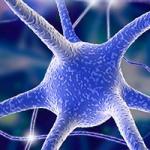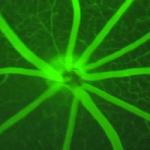
Research Topics
The general mission of the Human Motor Control Section is to understand the physiology of normal human voluntary movement and the pathophysiology of different movement disorders. The members of the Section work together on the different projects, each bringing special expertise to the tasks. The main techniques employed are transcranial magnetic stimulation (TMS), electroencephalography (EEG), neuroimaging with positron emission tomography (PET) and functional magnetic resonance imaging (fMRI), and other techniques of clinical neurophysiology. The principal diseases studied are dystonia, Parkinson's disease, cerebellar ataxia, myoclonus, essential tremor, tic, functional movement disorders and startle disorders.
In relation to the physiology of movement, we have studied the brain processes associated with the preparation and execution of different types of movements. A special interest is the process of movement initiation and volition. We have been studying motor learning including the process of making movement automatic and the process of movement selectivity.
Biography
Dr. Hallett obtained his A.B. and M.D. at Harvard University, had his internship in Medicine at the Peter Bent Brigham Hospital and his Neurology training at Massachusetts General Hospital. He had fellowships in neurophysiology at the NIH and in the Department of Neurology, Institute of Psychiatry in London, where he worked with C. David Marsden. Before coming to NIH in 1984, Dr. Hallett was the Chief of the Clinical Neurophysiology Laboratory at the Brigham and Women's Hospital in Boston and progressed to Associate Professor of Neurology at Harvard Medical School. He is currently Chief of the Medical Neurology Branch and Chief of its Human Motor Control Section. He is now the Inaugural President of the Functional Neurological Disorder Society and also the Past-President of the International Federation of Clinical Neurophysiology. He has been President of the International Parkinson and Movement Disorder Society and Vice-President of the American Academy of Neurology. He served as Editor in Chief of Clinical Neurophysiology. Among many awards, in 2012 he became an Honorary Member of the American Neurological Association, and in 2017 he received the degree of Doctor of Medicine Honoris Causa from the University of Hamburg, and in 2018 was made an Honorary Member of the European Academy of Neurology. In 2019, he was awarded the World Federation of Neurology’s Medal for Contributions to Neuroscience. His research activities focus on the physiology of human voluntary movement and its pathophysiology in disordered voluntary movement and involuntary movement. Formerly an NIH Distinguished Investigator, Dr. Hallett became an NINDS Scientist Emeritus in 2023.
Selected Publications
- Thirugnanasambandam N, Leodori G, Popa T, Kassavetis P, Mandel A, Shaft A, Kee J, Kashyap S, Khodorov G, Hallett M. Parietal conditioning enhances motor surround inhibition. Brain Stimul. 2020;13(2):447-449.
- Merchant SHI, Frangos E, Parker J, Bradson M, Wu T, Vial-Undurraga F, Leodori G, Bushnell MC, Horovitz SG, Hallett M, Popa T. The role of the inferior parietal lobule in writer's cramp. Brain. 2020;143(6):1766-1779.
- Spagnolo PA, Norato G, Maurer CW, Goldman D, Hodgkinson C, Horovitz S, Hallett M. Effects of TPH2 gene variation and childhood trauma on the clinical and circuit-level phenotype of functional movement disorders. J Neurol Neurosurg Psychiatry. 2020;91(8):814-821.
- Vanegas-Arroyave N, Chen DF, Lauro PM, Norato G, Lungu C, Hallett M. Where Do Parkinson's Disease Patients Look While Walking? Mov Disord. 2022;37(4):864-869.
- McGurrin P, Vial F, Osterholt T, Norato G, Khan I, Haubenberger D, Ehrlich D, Hallett M. Physiology of Tremor Reduction by Putting the Hands Together in Essential Tremor. Mov Disord Clin Pract. 2022;9(2):191-197.
Related Scientific Focus Areas



Social and Behavioral Sciences
View additional Principal Investigators in Social and Behavioral Sciences

This page was last updated on Thursday, May 29, 2025